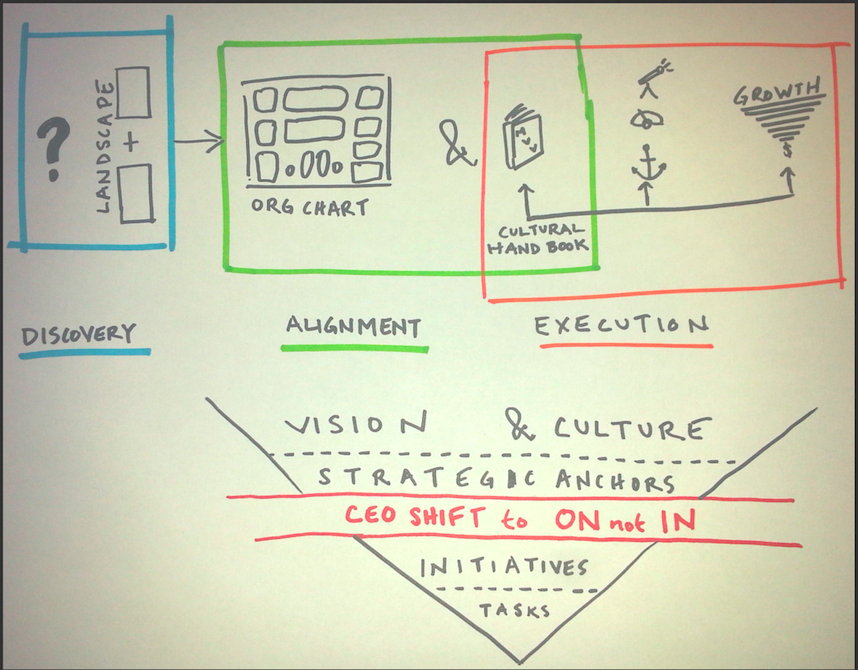Over the last 5 years I’ve had the privilege of serving numerous churches and organizations to help them translate their mission into a web strategy. We’ve met with the key leadership of some of the largest, fastest growing churches in North America, turn-around churches and church planting networks through our Church Web Strategy Sessions and Communication Roundtables.
Here are the 6 most common ways I’ve seen churches fail when they seek to translate their vision online:
1. Skymall Syndrome – This syndrome often strikes when someone in leadership sees something shiny and (usually) unnecessary, like when while flying we think we need to buy something in the Skymall magazine (confession: I’ve done this once). After seeing this flashy object, a church leader wants it for their church. The failure of this strategy is that often people spend a lot of money on a flashy website but it does not make a substantial impact on their organization. Pretty websites are a waste of time and money because they are not enough. Today, a thought out strategy is essential because a new generation of digital natives are growing up, where the new front-door to your church is the website. When we work with churches we like to see goals created that drive the design/strategy process. For example, one church wants to go from 60% of their church in small groups to 80% and their website design facilitates this. Another church sought new visitors, people visiting the New Visitor info more than doubled based on the redesign and emphasis on this (see screenshots below).

2. Ministry Schizophrenia – Ministry schizophrenia often strikes in larger churches with many ministries. Too many cooks are in the kitchen and they all want their ministry front-and-center. In our strategy sessions, we often uncover that as the senior leadership clarifies their vision/mission that ministries either don’t know how to connect what they do to this or have competing agendas. It’s incredibly powerful when an organization can align their ministry leaders behind the key strategic initiatives of a church. As one person on our team said, “It’s amazing how often an indicator of problems and communication is within the church by looking at the website.” How are you aligning your ministries to work together to achieve what God is calling your church to do?
3. Enough about you, let’s talk about ME – Would you like to join the Elevate ministry? Or how about Oasis? I’m guessing you don’t know what those are. Often churches become too organization focused, designing for internal people & ministry leaders not end users/visitors. How can a new person find what they are looking for without knowing your internal language?
4. The Blind leading the Blind – This occurs when no one has thought through the reason for a website, there is a clear lack of clarity of vision and purpose. Sadly, we’ve seen several churches hand-off the website design process to people who do not have the experience to navigate the complexity and buy-in to lead the vision to succeed. The end result is noise/clutter and unclear direction for the website.
5. Death by Committees – Many churches we’ve come across suffer from this bureaucratic malaise. It seems like by the time you make a decision on the web strategy, because of the process (committees/bureaucracy), what you originally planned is already out of date by the time you finish. The web changes so fast, it requires a more responsive approach. Who can lead in this agile environment? Who is going to ensure you have your Twitter handle or you have a Social Media Policy to respond to criticism?
6. Volunteer Hostage Situation – This is the most dangerous of all the six listed. I cannot tell you how many times we’ve run into this situation (in fact this one will deserve it’s own post to expand further), where a volunteer in the church has control of the website and it leads to failure. Usually it is a techie or key member. If I had a nickel for every time someone shared a story of a church member who managed the website and then moved away, leaving the church in a lurch. Or a techie who programmed something only they could use. We’ve found very few churches who succeed when they have volunteers lead the online communication channel. We often coach communication teams to act as consultants to ministry leaders not gatekeepers. If only one person has control to add content online, churches have a serious bottleneck. Another time a church with a school I know with had a key giver run the website and be unwilling to relinquish control. The school was not able to be found online because of poor programming and code and the website looked like it was from the 90’s in a bad way. When a separate website was built that was able to address several of these shortcomings for their elementary school, it led to an enrollment increase by 1/3 . This leads to tens-of-thousands of dollars each year added to the school budget as they’ve hit capacity on Preschool and Kindergarten since the launch of this new website.
Conclusion: The web no longer is a nice thing to have. Today a presence online has become an essential element of interacting with new people as well as your existing congregation. Churches need a clear leadership plan to establish their vision, align their ministries and build a plan with specific goals in mind. With how fast things are changing, this can’t be a roadmap that becomes obsolete by the time it’s created, it needs to be a learned rhythm that constantly triages the situation to focus on where the church needs to go.
If you need help, we offer a 3-step consulting framework for Church Web Strategy Sessions that address these concerns and give you a way forward based on what we’ve learned leading many organizations successfully through this.
RELATED POSTS

